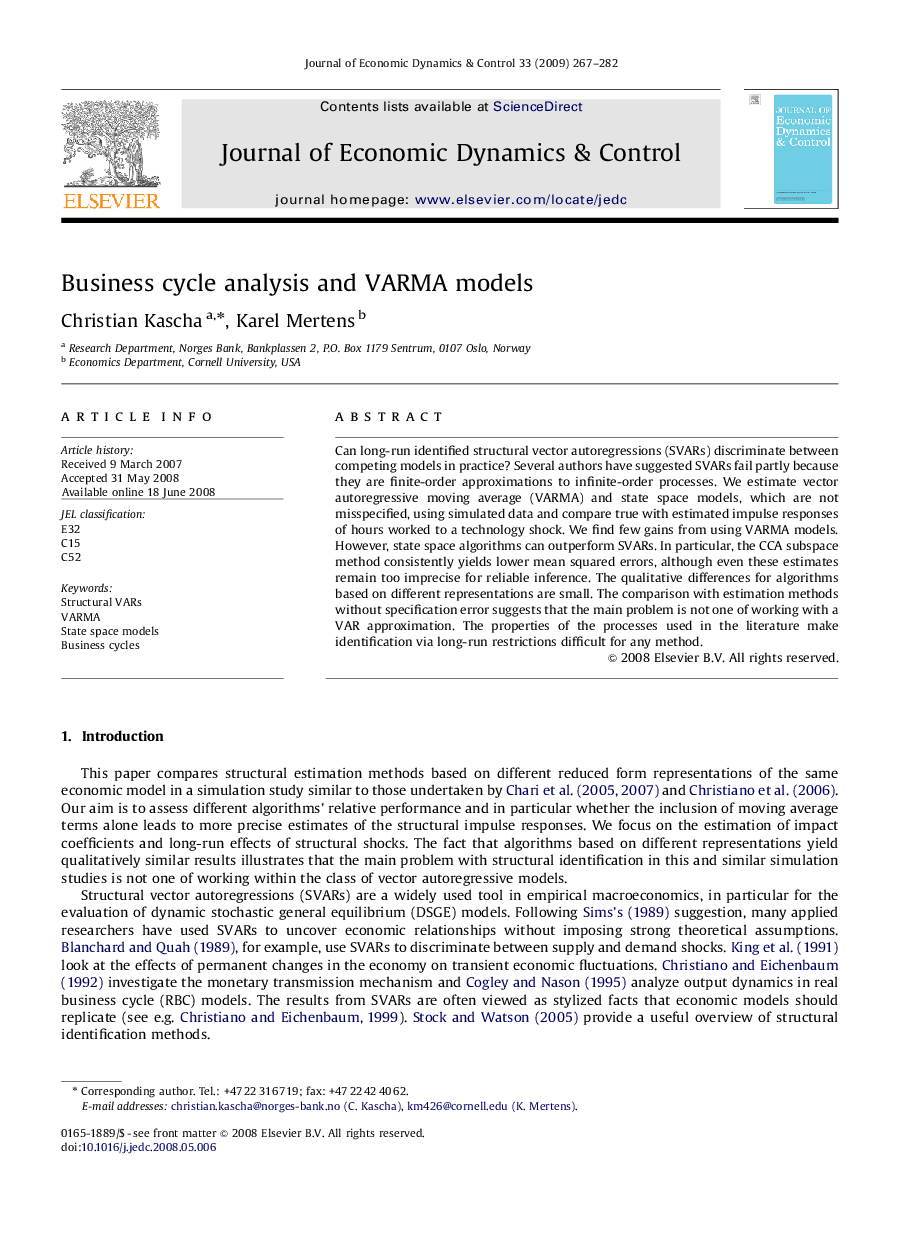| Article ID | Journal | Published Year | Pages | File Type |
|---|---|---|---|---|
| 5099103 | Journal of Economic Dynamics and Control | 2009 | 16 Pages |
Abstract
Can long-run identified structural vector autoregressions (SVARs) discriminate between competing models in practice? Several authors have suggested SVARs fail partly because they are finite-order approximations to infinite-order processes. We estimate vector autoregressive moving average (VARMA) and state space models, which are not misspecified, using simulated data and compare true with estimated impulse responses of hours worked to a technology shock. We find few gains from using VARMA models. However, state space algorithms can outperform SVARs. In particular, the CCA subspace method consistently yields lower mean squared errors, although even these estimates remain too imprecise for reliable inference. The qualitative differences for algorithms based on different representations are small. The comparison with estimation methods without specification error suggests that the main problem is not one of working with a VAR approximation. The properties of the processes used in the literature make identification via long-run restrictions difficult for any method.
Related Topics
Physical Sciences and Engineering
Mathematics
Control and Optimization
Authors
Christian Kascha, Karel Mertens,
